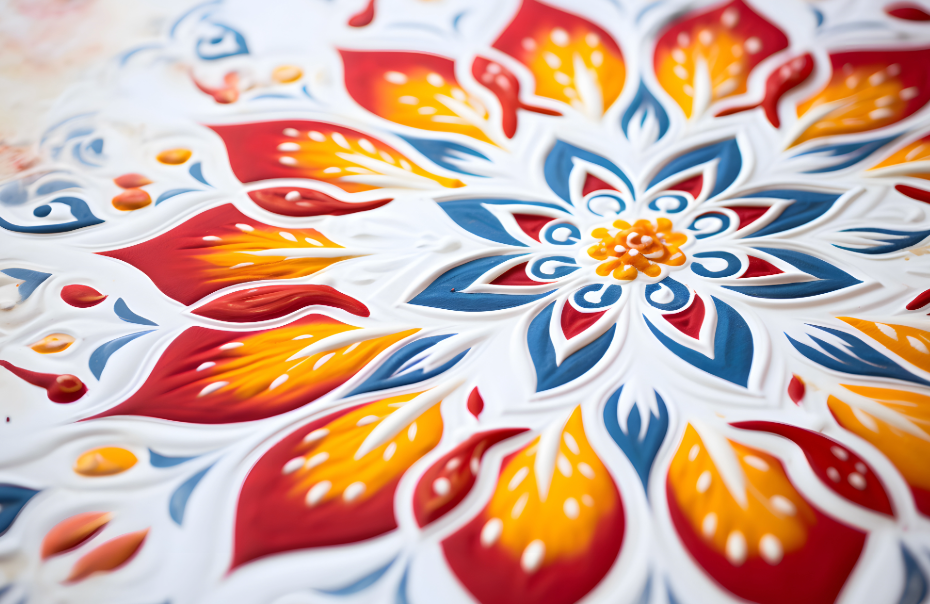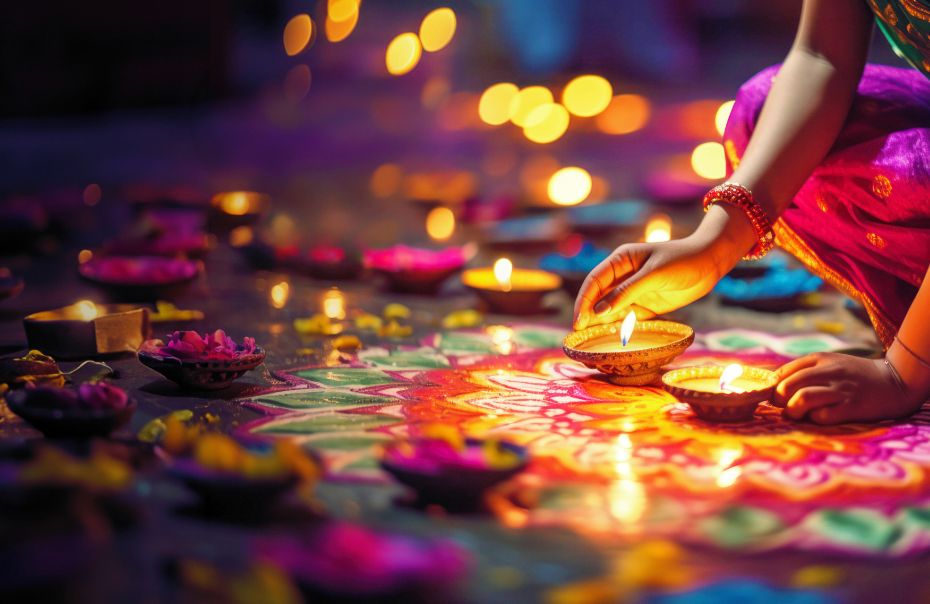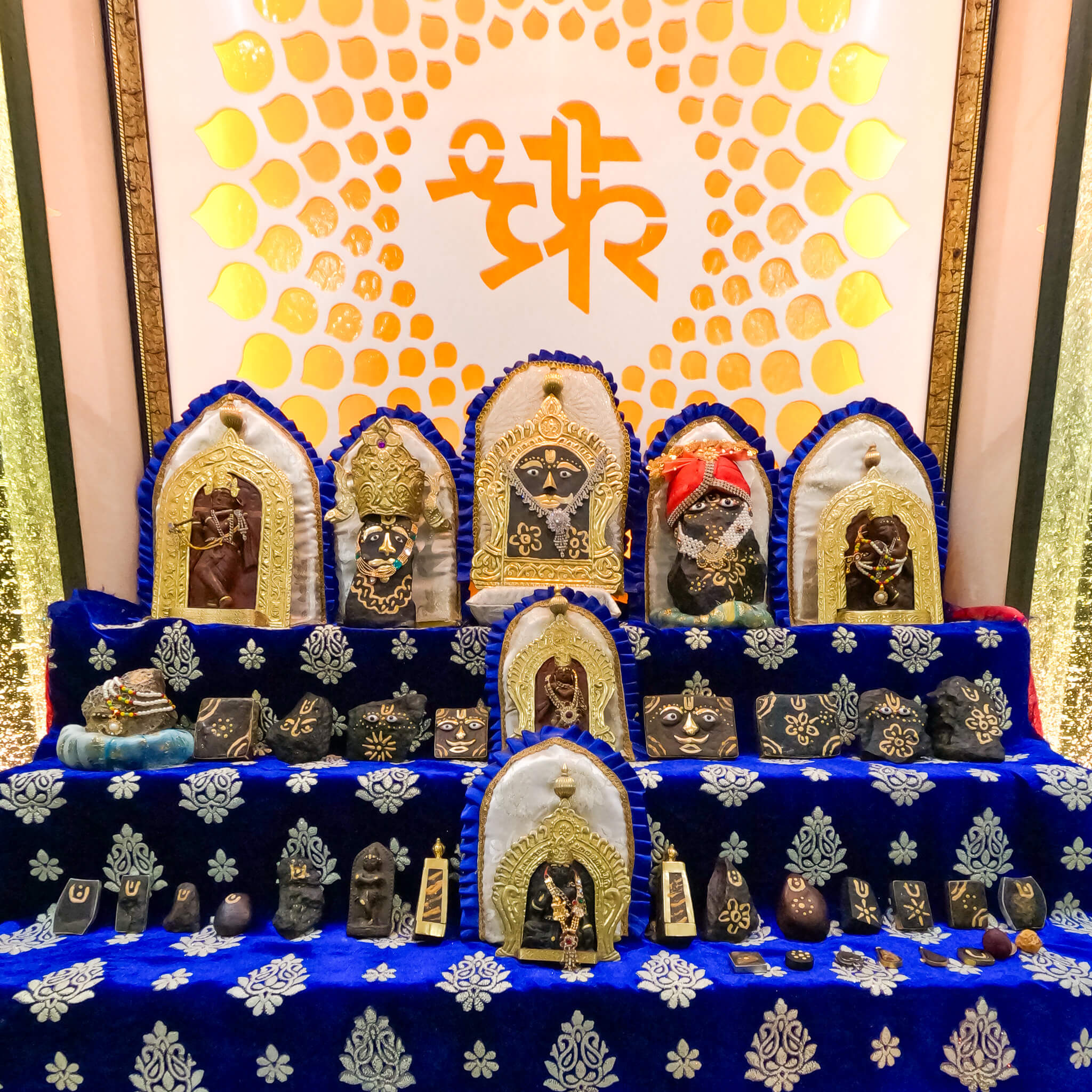Step into any Indian household during the month of Chaitra, and you’ll likely be greeted by a vibrant artwork adorning the doorstep or courtyard. This is the Chaitrangan rangoli, a unique and intricate design that holds more significance than its beautiful colors suggest. Today, let’s delve into the essence of this age-old tradition, exploring its symbolism, cultural importance, and ways to keep it alive in our modern times.
Beyond the Hues: Decoding the Design
A Chaitrangan rangoli isn’t merely a random pattern of colors. It’s a meticulously crafted composition brimming with meaning. Traditionally drawn with rice flour or colored powders, the designs typically encompass:
Geometric patterns: Squares, triangles, and circles symbolize stability, growth, and completeness.
Auspicious symbols: Swastikas and mango leaves represent well-being and prosperity.
Deities: Images of Ganesha, Lakshmi, or Saraswati invoke blessings for wisdom, wealth, and good fortune.
Mythological scenes: Depictions from epics like Ramayana and Mahabharata remind us of our rich cultural heritage.
Significance that Resonates: Why Chaitrangan Matters Creating a Chaitrangan rangoli transcends mere decoration. It’s a ritual steeped in cultural and spiritual significance
Welcoming New Beginnings: As Chaitra marks the Hindu New Year, it’s a way to invite positivity and blessings into the home for the coming year.
Invoking Divine Grace: The inclusion of deities and symbols signifies devotion and prayer, seeking divine blessings for the family.
Celebrating Art and Heritage: The intricate designs and meticulous craftmanship uphold the tradition of Indian art forms and pass down cultural knowledge.
Connecting Generations: Creating the rangoli often involves families working together, strengthening bonds and transmitting cultural values.
A Fading Legacy: Reviving the Art in Modern Times
In our fast-paced lives, the daily practice of creating rangolis faces challenges. However, it’s important to remember that keeping traditions alive doesn’t require grand gestures. Here’s how we can bring Chaitrangan back into our daily lives:
Start small: Begin with simple geometric patterns, gradually progressing to more elaborate designs.
Engage the young ones: Involve children in the process, making it a fun learning experience.
Modernize the materials: Explore vibrant eco-friendly colors and stencils for convenience.
Share the knowledge: Organize workshops or online tutorials to spread the love for the art form.
From doorstep to heartspace, the Chaitrangan rangoli is more than just a visual treat. It’s a reminder of our rich heritage, a symbol of our cultural identity, and a gateway to spiritual connection. Let’s keep this vibrant tradition alive!!
Do you have any memories associated with Chaitrangan rangolis? Share your thoughts and experiences in the comments below. Let’s keep the conversation flowing!
Points to remember:
Using eco-friendly colors and stencils while preserving the essence.




Leave a comment
This site is protected by hCaptcha and the hCaptcha Privacy Policy and Terms of Service apply.